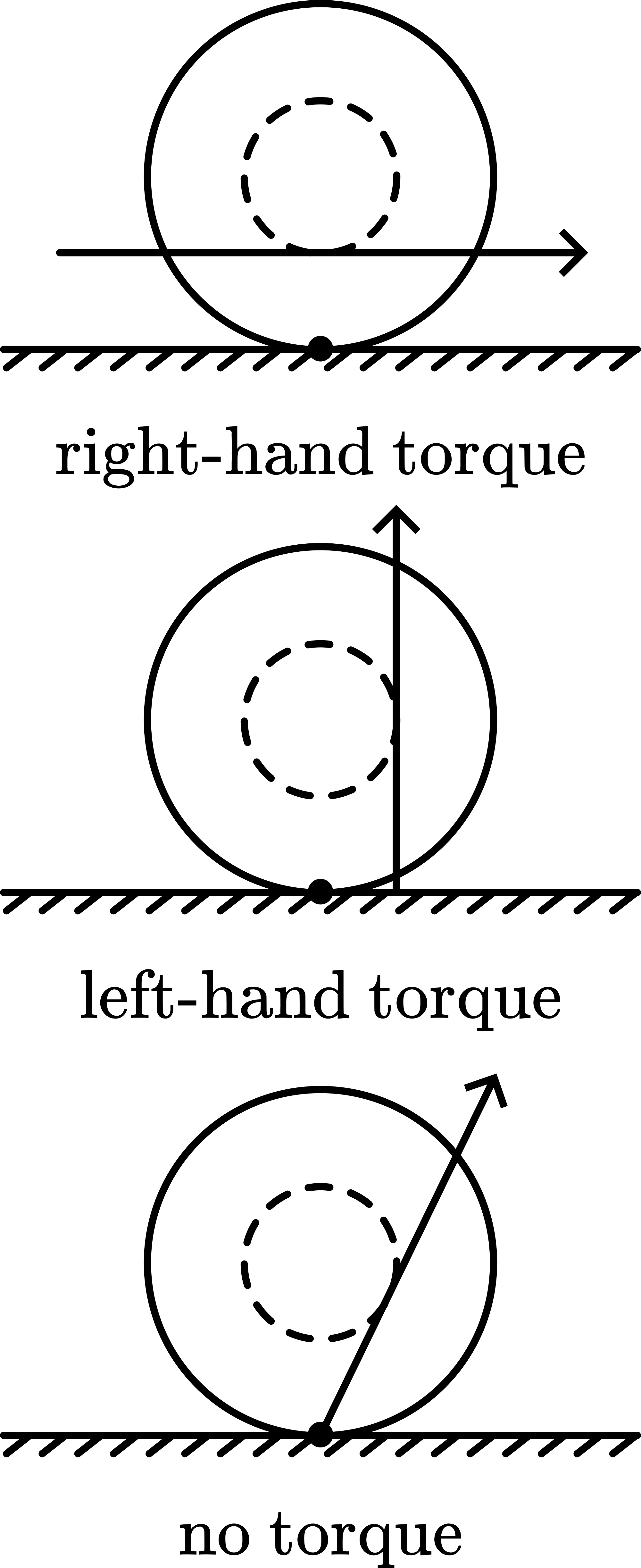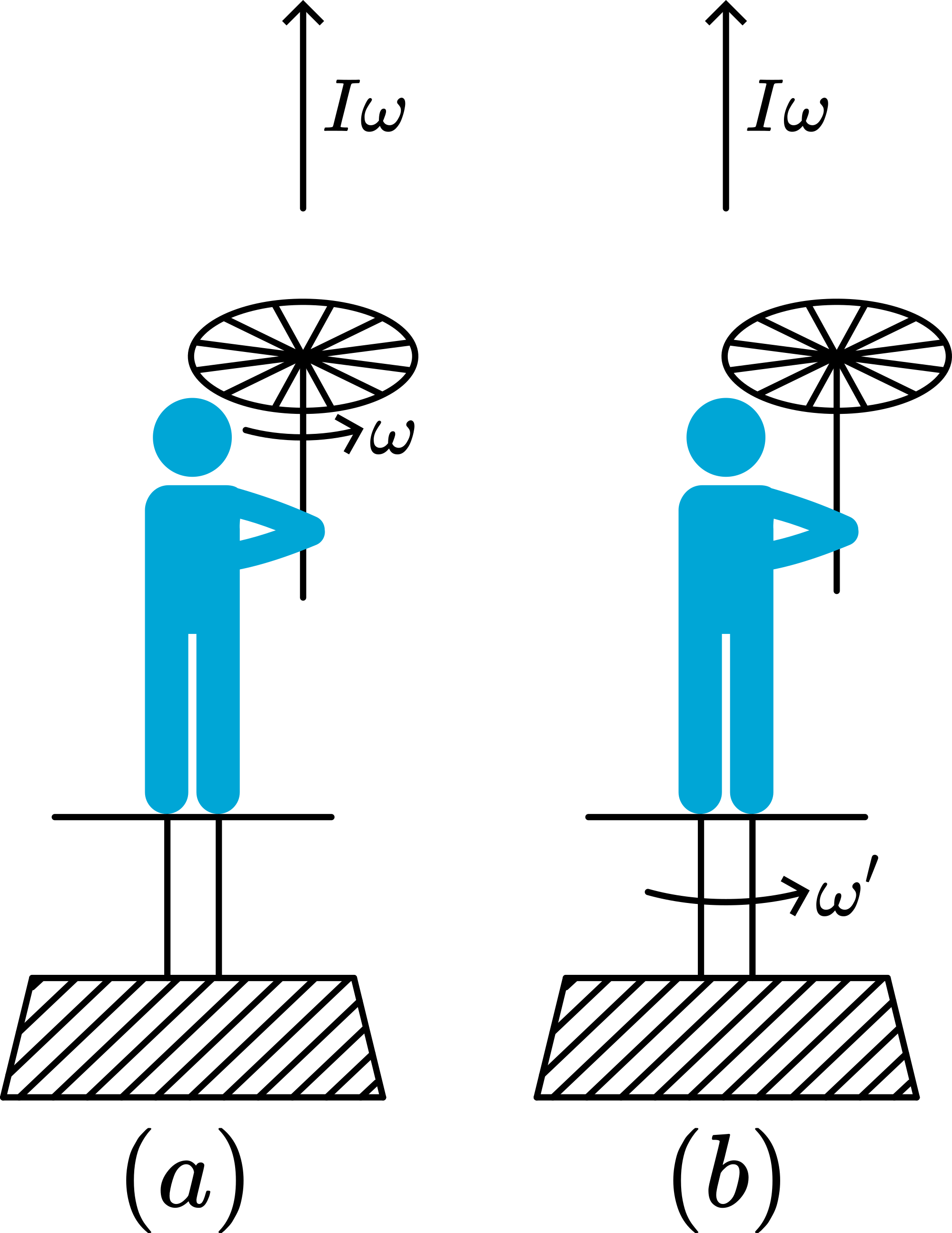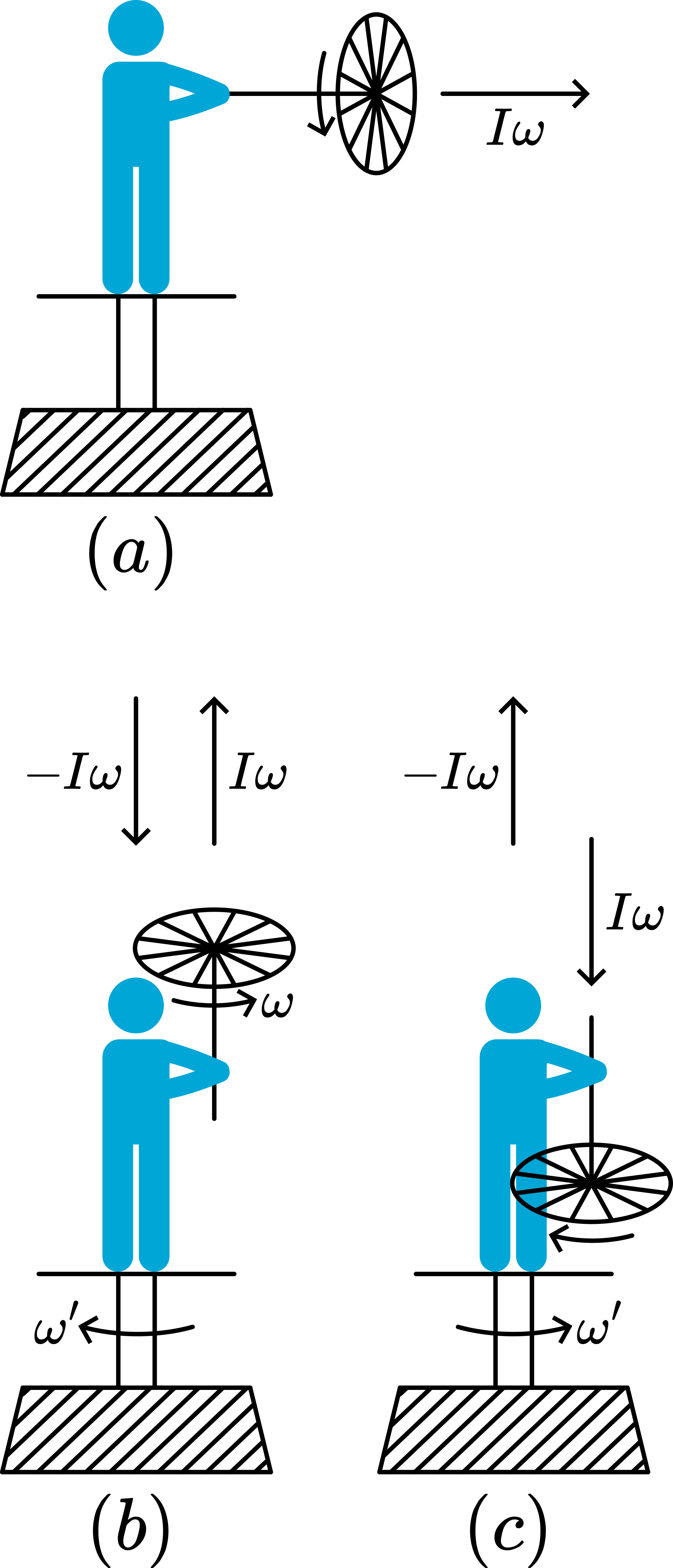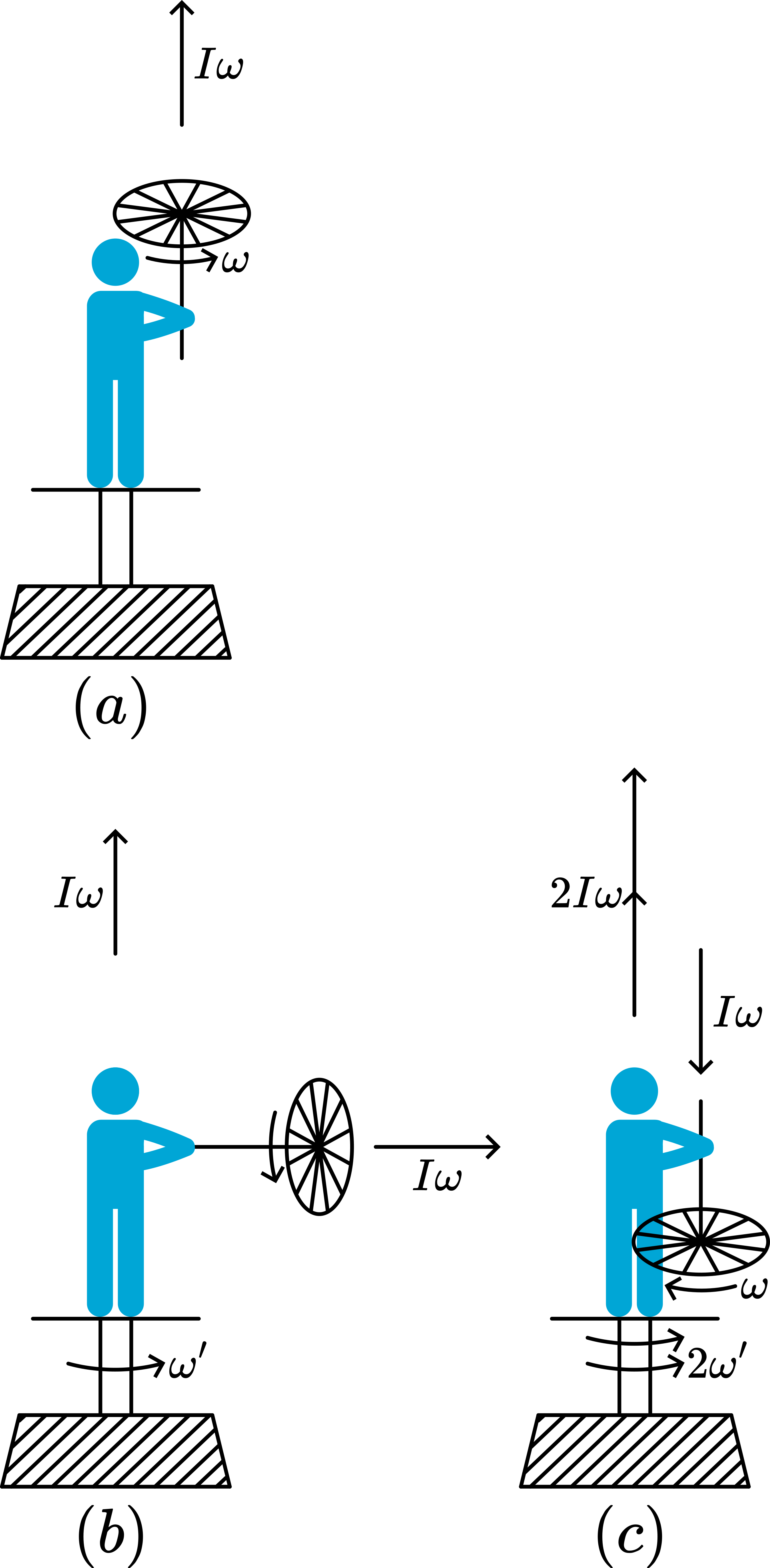16 Bicycle Wheel and Swivel Chair#
Aim#
To show conservation of angular momentum.
To clarify the vector characteristics of angular momentum. (In this demonstration especially the direction of angular momentum is important.)
Subjects#
1Q40 (Conservation of Angular Momentum)
Diagram#

Fig. 238 .#
Equipment#
Swivel-chair.
Bicycle wheel with handles and leaded rim.
Safety#
When handling the bicycle wheel for the first time, practice with it standing firmly on the ground and not on the swivel-chair, because the direction of the experienced forces might take you by surprise and hurt you.
When you want to stop the bicycle wheel, slowing it down to a stop with your hand, be careful not to burn your hand.
Presentation#
The demonstrator sits on the swivel-chair and holds the bicycle wheel in front of him. The wheel is held with its axis vertical. The demonstrator spins the wheel and immediately he starts rotating in the opposite sense. When by hand he stops the wheel, also the swivel chair stops.
The demonstrator sits on the swivel chair. An assistant hands him the bicycle wheel that is spinning already around the vertical axis. Before doing so, ask the audience what will happen? Answer: nothing! But when the demonstrator slows down the bicycle wheel by braking it, the swivel-chair with demonstrator will start turning round in the same direction as the bicycle wheel did.
The demonstrator sits on the swivel chair. An assistant hands him the bicycle wheel that is spinning already around the horizontal axis. Again nothing happens. But if he then turns the spinning wheel to a vertical position of its axis, he will rotate in the opposite sense to the spin of the wheel. Turning the wheel another \(90^\circ\) , so the axis is horizontal again, it brings him back to a stop. Turning the wheel another \(90^\circ\) makes him turn again but now in opposite direction.
When the demonstrator continuously turns the axis of the spinning wheel, then the swivel-chair will turn in one sense and then to the other and so on.
Again the assistant hands a spinning bicycle wheel to the demonstrator that sits on the swivel chair (wheel axis vertical again). When the demonstrator on the swivel-chair turns the axis \(90^\circ\) then the demonstrator starts turning. When he turns it another \(90^\circ\) then he rotates even faster! ( \(2 x\) )
When there is time to practice with your assistant, you can continue this demonstration in the following way:
Start in the same way. (The demonstrator sits on the swivel chair; the assistant hands over the turning bicycle wheel - axis vertical -; the demonstrator turns it \(180^\circ\).) Now the demonstrator, while rotating on the swivel-chair, hands the wheel back to his assistant, who in turn rotates the axis through \(180^\circ\) and again hands it to the demonstrator on the swivel chair. When the demonstrator now turns the spinning wheel over a second time, his angular velocity increases (doubles). Additional “quanta” may be given to him by repeating this process.
If, however, the assistant fails to turn the wheel over once but turns it over each time thereafter, the process becomes subtractive.
Explanation#
Making the wheel turn, it obtains an angular velocity \(\omega\) and an angular momentum \(L=/ \omega\).
Then the swivel chair has to turn in the opposite sense with an angular velocity \(\omega^{'}\), whose angular momentum equals -/ \(\omega\) (see Figure 239b), because the total angular momentum of the system has to remain zero as it is in the beginning of the demonstration (Figure 239a).

Fig. 239 .#
The wheel has an angular momentum of \(L=/ \omega\) (see Figure 240a). This angular momentum is conserved, so when the wheel stops, the swivel chair with demonstrator will start to rotate (see \(\omega^{'}\) in Figure 240b) in the same direction as \(\omega\).

Fig. 240 .#
When the rotating wheel has its axis in horizontal position (Figure 241a), then there is no angular momentum in the vertical direction. The swivel chair is not rotating.
Turning the wheel 90 upwards (Figure 241b), then an angular momentum is introduced in the vertical direction (/ \(/ \omega\) ). This has to be compensated by another angular momentum of the same amount (-/ \(/ \omega\) ) in order to keep the total angular momentum in the vertical direction zero: the swivel chair and demonstrator will rotate ( \(\omega^{'}\) in Figure 241b).
Bringing the wheel down (see Figure 241c) will make the swivel chair turn into the other direction.
(The disappearance of \(I \omega\) in the horizontal direction has no rotating effect, because the set up cannot rotate around a horizontal axis. The only effect is a torque felt by the demonstrator.)

Fig. 241 .#
In the beginning the wheel is turning, so there is an amount of angular momentum: \(L=/ \omega\), and the swivel chair is standing still (see Figure 242a). Bringing the rotating wheel to a horizontal position removes that angular momentum from the system, but since angular momentum needs to be conserved, the whole system starts rotating ( \(\omega^{'}\) ) in the same direction as \(\omega\). When the wheel is lowered once more (Figure 242c), the figure makes clear that the swivel chair has to speed op to \(2 \omega\).

Fig. 242 .#
This is repeating the procedure of situation 4 a number of times. In the beginning the swivel chair is not rotating. At the end of the first round it rotates with \(2 \omega\). Then after the second run it rotates with \(4 \omega\), after the third run with \(6 \omega\), and so on.
Remarks#
After the demonstration we have more bicycle wheels and swivel chairs in our lecture hall so the students can practice themselves and experience those ‘strange’ forces/torques.
Video Rhett Allain#
Sources#
Borghouts, A.N., Inleiding in de Mechanica, pag. 173, 174.
Sutton, Richard Manliffe, Demonstration experiments in Physics, pag. 75, 76.
Leybold Didactic GmbH, Gerätekarte, 33166.
Mansfield, M and O’Sullivan, C., Understanding physics, pag. 105.
